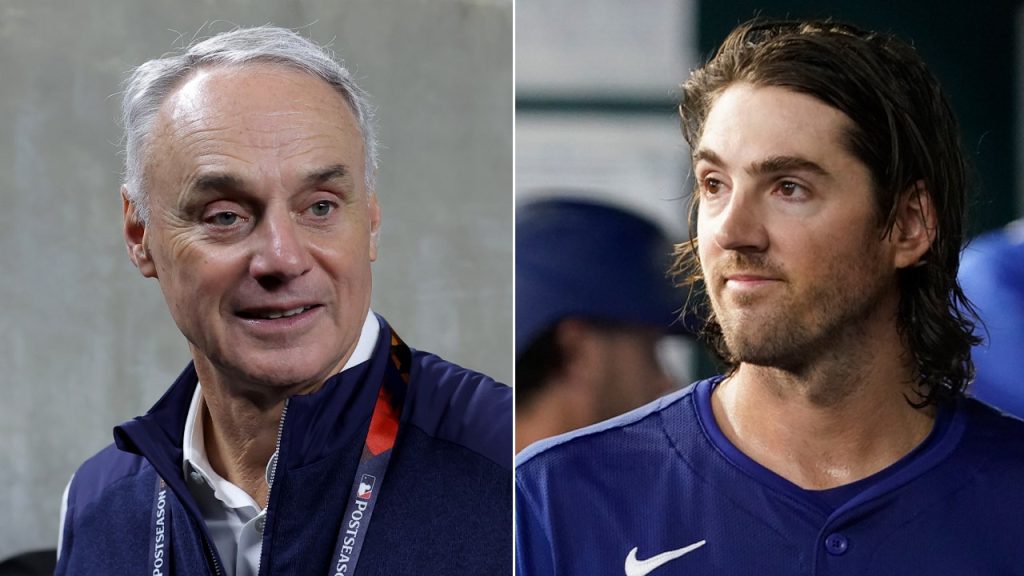Kevin Gausman’s public rebuke of MLB Commissioner Rob Manfred ignited a discussion about the future of starting pitching in baseball. Gausman, a Toronto Blue Jays pitcher who prides himself on going deep into games, accused Manfred of misleading fans about the league’s intentions regarding pitching regulations. This disagreement stems from Manfred’s comments on the “Questions for Cancer” podcast, where he addressed concerns about the declining number of innings pitched by starters and the potential implementation of rules like a minimum inning requirement or the controversial “golden at-bat.” Gausman’s skepticism, fueled by recent discussions about radical rule changes, reflects a broader anxiety among pitchers about the direction of the game. He warned fans to be prepared for a future where starting pitchers are routinely pulled after just six innings, potentially replaced by a designated hitter under certain circumstances.
The core of the dispute lies in the diverging perspectives on how to best address the decreasing workload of starting pitchers. Manfred dismissed the idea of a mandatory minimum number of innings, arguing that it’s too inflexible and wouldn’t effectively solve the problem. He instead advocated for a more nuanced approach involving roster and transaction rules that would incentivize teams to develop pitchers capable of longer outings. He believes that frequent pitcher substitutions, facilitated by current roster regulations, contribute to the problem. By making it more difficult to shuffle pitchers on and off rosters, Manfred hopes to encourage teams to invest in pitchers who can consistently go deeper into games. He pointed to the importance of starting pitchers in marketing the game, highlighting how their names and faces are prominently featured in broadcasts. He argued that the classic matchups between star pitchers have historically been a major draw for fans, a tradition he believes MLB needs to revive.
However, Gausman’s reaction suggests a deep distrust of Manfred’s intentions. He views the commissioner’s comments as disingenuous, fearing that the league is moving towards further limiting starting pitchers’ roles. The proposed “golden at-bat” rule, which would allow a team to send any batter to the plate regardless of their place in the batting order, further fuels this suspicion. While Manfred did not explicitly endorse this specific rule in his podcast appearance, its mere consideration has heightened concerns that MLB is prioritizing offense at the expense of traditional pitching roles. This skepticism is likely rooted in the ongoing evolution of baseball strategy, which has increasingly emphasized bullpen management and specialized relievers, often at the expense of starting pitchers’ longevity in games. Gausman’s performance in the 2024 season, where he led the league in complete games and shutouts, stands in stark contrast to this trend, highlighting his commitment to the traditional role of the starting pitcher.
The declining average innings pitched per start underscores the significance of this debate. According to CBS Sports, the average in 2024 was 5.2 innings, a full inning less than in 1984. This trend reflects several factors, including the increasing emphasis on pitch velocity and spin rate, which Manfred acknowledged as contributing to a rise in pitching injuries. Teams are often more cautious with their pitchers, opting to pull them earlier to prevent overuse and potential injuries. The increasing specialization of bullpens, with relievers assigned to specific innings or situations, has also diminished the traditional role of the starting pitcher. The combination of these factors has led to a shift in the way baseball games are managed, with starting pitchers often viewed as less crucial than they were in previous eras.
Gausman’s public challenge to Manfred highlights the growing tension between tradition and innovation in baseball. Pitchers like Gausman, who value the traditional role of the starting pitcher, are wary of rule changes and strategic shifts that diminish their importance. They see the emphasis on shorter outings and increased bullpen usage as a threat to the integrity of the game. On the other hand, MLB, under Manfred’s leadership, is seeking ways to adapt to evolving player capabilities and fan preferences. The league is exploring rule changes aimed at increasing offensive output and speeding up the pace of play, potentially at the expense of traditional pitching roles. This conflict between preserving the historical essence of baseball and adapting to the modern game is at the heart of this ongoing debate.
Ultimately, the future of starting pitching in baseball remains uncertain. Manfred’s comments suggest that the league is unlikely to implement a mandatory minimum inning requirement, opting instead for more subtle rule changes to encourage the development of durable starting pitchers. However, Gausman’s skepticism, shared by many within the baseball community, indicates that these proposed changes may not be enough to allay concerns about the diminishing role of starters. The tension between tradition and innovation will continue to shape the evolution of baseball, with the debate over the optimal balance between offense and pitching, and the role of the starting pitcher within that dynamic, remaining a central point of contention. The “golden at-bat” proposal, while not currently implemented, looms as a potential flashpoint in this ongoing discussion, symbolizing the potential for radical changes to the traditional structure of the game.

